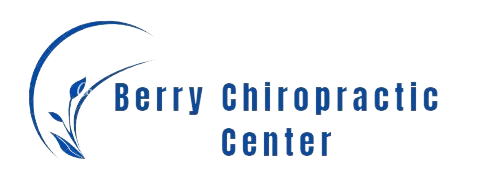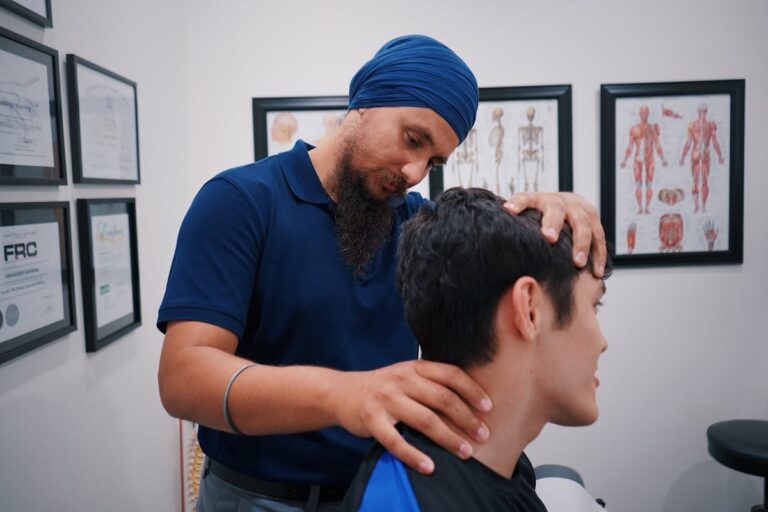Chiropractic adjustments occasionally cause headaches, specifically after neck region treatments. These incidents are rare, usually linked to specific health conditions. Despite studies showing chiropractic care can alleviate certain headaches, this correlation warrants further investigation. The interaction between chiropractic treatments and headache occurrences remains an area of interest.
Understanding Chiropractic Adjustments
Chiropractic adjustments apply controlled force to a joint, typically the spine, to enhance physical function and relieve pain. Tailored to individual conditions, these interventions offer several benefits, such as chronic pain relief and improved nervous system function. Research, including Bryans et al. (2014), supports spinal manipulation therapy’s effectiveness for acute and chronic lower back pain. Haavik et al. (2017) found neurophysiological improvements in sensorimotor function, enhancing reaction time and reducing fall risk in older adults post-adjustment. Techniques like high-velocity, low-amplitude (HVLA) thrust and flexion-distraction restore joint mobility by applying controlled force into hypomobile joints — those with restricted movement due to tissue injury. Correct technique selection and execution optimize benefits and minimize risks.
Common Post-Adjustment Symptoms
Post-chiropractic adjustment, patients can encounter symptoms, including tension and potential headaches, known as an initial adjustment reaction. Managing these symptoms is crucial in the chiropractic care process.
Initial Adjustment Reaction
The ‘Initial Adjustment Reaction’ post-chiropractic treatment is a commonly overlooked phenomenon. It can cause mild discomfort, fatigue or lightheadedness, but these symptoms are typically temporary. The reaction results from the body’s natural response to realignment. The severity and duration of symptoms can vary based on health, age, and the nature of the adjustment. Monitoring these reactions improves patient care.
Tension and Headaches
Post-adjustment symptoms often include tension and headaches, resulting from the body’s physiological response to chiropractic manipulation. These symptoms emerge from altered nerve signals and blood flow as the body realigns. Pre-existing headache triggers like stress, dehydration, or poor posture may intensify post-adjustment due to amplified bodily awareness. The body’s adaptation to new alignment may also cause increased muscle tension, perceived as stress, triggering headaches. Therefore, stress management is crucial in alleviating these symptoms post-adjustment. This knowledge prepares patients for potential symptoms and their management.
Managing Post-Adjustment Symptoms
Post-adjustment symptoms, including headaches, can be effectively managed by hydrating after adjustments, individualized treatment plans, gradual adjustments, prompt symptom communication, and lifestyle changes such as regular exercise and a balanced diet. Hydration post-adjustment aids in toxin elimination, reducing headache frequency and intensity. For detailed guidance on what steps to take after your chiropractic care, consider reviewing this helpful guide on What to Do After Chiropractic Adjustment. Tailored chiropractic treatment and careful, gradual adjustments minimize post-adjustment symptoms. Prompt reporting of symptoms ensures timely, appropriate response. Regular exercise and a balanced diet additionally manage symptoms.
Linking Chiropractic Care to Headaches
Research links chiropractic care to headaches. Some evidence suggests chiropractic adjustments may cause headaches, questioning treatment safety. More study is needed to confirm causes and effects, emphasizing methodical patient experience and clinical study analysis.
Chiropractic Adjustments: A Trigger?
Chiropractic adjustments, specifically high-velocity neck manipulations, may trigger headaches, according to some studies. These techniques, controversial within the chiropractic field, can also cause dizziness and, in rare instances, strokes. However, these adverse effects predominantly occur in individuals with certain health conditions and are not common in comparison to successful treatments. Importantly, not all chiropractic treatments utilize high-velocity manipulations. Before proceeding with chiropractic care, potential risks must be understood and discussed with a healthcare professional. For more details on the potential dangers of neck adjustments, especially high-velocity ones, consider reviewing When Chiropractic Neck Adjustments Can Be Risky.
Exploring the Headache Connection
The link between chiropractic care and headaches intertwines with numerous individual factors, clinical research, and varied patient experiences. Headache triggers, such as stress, poor posture, and certain foods, differ among individuals. Studies reveal that chiropractic care, specifically spinal manipulation, can alleviate tension headaches and those stemming from the neck. This relief results from reduced nervous system pressure, spinal abnormality correction, and enhanced overall wellness through chiropractic treatment. However, some patients report that these adjustments exacerbate or trigger their headaches, highlighting the need for more research on this complex relationship.
The Science Behind the Pain
Extensive research and clinical studies show that headaches can result from chiropractic adjustments due to disruptions in the complex network of nerves, muscles, and blood vessels in the neck and head. This involves several physiological processes:
- Neurogenic inflammation: Irritated nerve fibers can swell and cause pain, potentially due to improper chiropractic adjustments.
- Muscle tension: Headaches can be triggered by increased muscle tension in the neck and head following adjustments.
- Vascular changes: Manipulation of neck muscles and joints can affect head blood vessels, leading to headaches.
Types of Headaches Post-Adjustment
After a chiropractic adjustment, tension headaches and migraines are the common types. Tension headaches, characterized by dull, aching sensation across the head, result from physical manipulation of the neck and head. On the other hand, migraines, marked by severe, throbbing pain and symptoms like nausea, are triggered by changes in cerebral blood flow post spinal manipulation.
Post-Adjustment Tension Headaches
Tension headaches can occur after chiropractic adjustments. These headaches, typically characterized by a dull, aching sensation around the forehead or the back of the head and neck, are often temporary. Causes might include temporary changes in blood flow or muscle tension. Management strategies include over-the-counter pain relievers, deep breathing exercises, and relaxation techniques. Despite their link to stress or poor posture, the physical manipulation in adjustments can trigger these symptoms.
Migraines After Chiropractic Care
Post-chiropractic care migraines are reported by a significant number of patients, pointing to a complex issue of post-adjustment headaches needing careful examination. The common misconception that chiropractic care always mitigates headaches contributes to this issue. However, individual health profiles and adjustment techniques influence the results, which can vary. Temporary migraine symptoms might occur in some patients due to the body’s reaction to the physical changes from adjustments. Research indicates these symptoms generally lessen over time as the body adjusts to its new alignment. Regular communication between the chiropractor and patient is crucial for adjusting care plans if migraines continue, ensuring optimal outcomes.
Case Studies and Research Findings
Research and case studies suggest a potential link between chiropractic adjustments and headache onset, sparking debate on the practice’s safety and efficacy. Analysis identifies possible headache triggers associated with chiropractic treatments, including sudden neck movements, increased stress, and vascular disturbances from neck manipulation.
A study in ‘Spine’ journal reported nearly half the participants experienced adverse symptoms, mainly headaches, after neck adjustments. ‘Journal of Manipulative and Physiological Therapeutics’ found a possible link between chiropractic care and delayed headache onset.
These findings highlight the need for further research to establish causation or coincidence. Knowledge of potential headache triggers after adjustments can help patients and practitioners reduce risks and navigate chiropractic controversies more effectively.
Expert Opinions on Chiropractic-Induced Headaches
Research on the link between chiropractic treatments and headaches is ongoing, with expert opinions focusing on chiropractic misconceptions and headache types. Experts contend that chiropractic adjustments vary and elicit different reactions, dismissing the notion that all adjustments universally cause headaches. They argue that post-treatment headaches are individual responses to body realignment.
Headache types play a critical role in this discussion. Not all headaches – tension, migraines, cervicogenic – are the same, as they possess distinct causes and symptoms. Specifically, cervicogenic headaches, often linked to neck issues, may see improvement with chiropractic care. Therefore, attributing all headaches to chiropractic adjustments oversimplifies the matter.
Experts also emphasize that chiropractors are equipped to identify treatment risks and contraindications. The importance of comprehensive patient history and physical examination is stressed to recognize potential hazards before adjustments. As such, despite occasional post-treatment headaches, chiropractic care is seen as safe and beneficial by most experts.
Preventing Headaches After Adjustments
To prevent headaches post-adjustment, implement these evidence-based strategies:
- Education: Grasp the chiropractic adjustment process and potential side effects, enabling better precautionary measures.
- Hydration: Maintain body fluid balance with regular water intake before and after treatment, mitigating headache frequency.
- Rest: Allow adequate post-treatment rest, including consistent and healthy sleep patterns, facilitating recovery and reducing headache likelihood.
These strategies emphasize the significance of patient understanding, hydration, and rest in preventing post-adjustment headaches. Hydration is crucial to alleviate tension and prevent muscle cramps, potential headache triggers. Quality sleep fosters body recovery, lessening post-adjustment discomfort. These preventive measures ensure optimal patient well-being post-chiropractic adjustments. For more on potential reactions after chiropractic treatments, visit our Chiropractic Treatment Side Effects page.
When to Seek Medical Attention
When experiencing post-chiropractic adjustment symptoms, distinguishing between temporary discomfort and serious medical warnings is crucial. If severe headache, dizziness, speech difficulty, balance loss, visual disturbance, or body-side weakness or numbness occur, immediate medical attention is required as these may signal a stroke. Furthermore, if a headache persists over 24-48 hours post-adjustment, medical consultation is necessary due to potential underlying conditions like herniated disc, blood clot, or infection. New symptoms such as fever, neck stiffness, confusion, or seizures also warrant serious attention since they could indicate meningitis or encephalitis.
Alternatives to Chiropractic Adjustments
Exploring alternatives to chiropractic adjustments can mitigate potential side effects. Acupuncture, physical therapy, biofeedback therapy, massage therapy, and nutritional counseling are effective approaches.
Acupuncture, according to the Cochrane Database of Systematic Reviews, reduces chronic headache frequency and intensity by stimulating specific body points, influencing pain transmission, and triggering endorphin release.
Physical therapy interventions, as noted in The Journal of Orthopaedic & Sports Physical Therapy, decrease headache frequency, improve life quality, and reduce intensity.
Biofeedback therapy trains patients to control physiological processes like muscle tension, blood pressure, and heart rate, reducing stress responses and managing headaches.
Massage therapy relieves muscle tension, enhances circulation, and promotes relaxation, potentially decreasing headache frequency and intensity.
Nutritional counseling identifies dietary triggers that exacerbate headaches, aiding in their avoidance and potentially reducing headache frequency and duration.
These alternatives can provide relief from post-chiropractic adjustment headaches.
Effective Headache Remedies
What are effective, scientifically-backed headache remedies? Hydration, magnesium supplementation, herbal remedies, and mind-body interventions are all proven to be effective. Dehydration triggers headaches, notably migraines. Increased water intake reduces headache duration, as proven by a study in the European Journal of Neurology. Magnesium, shown by the Journal of Neural Transmission, decreases migraine frequency by 41.6%. Herbal remedies, such as butterbur and feverfew, reduce migraine frequency and severity respectively, as found in the American Journal of Medicine. Mind-body techniques (cognitive-behavioral therapy, biofeedback, relaxation) decrease headache frequency and intensity, as evidenced by a meta-analysis in the European Journal of Pain. Thus, a multi-pronged approach involving hydration, natural remedies, and mind-body interventions effectively manages headaches.
Improving Your Chiropractic Experience
To optimize your chiropractic session, be clear about your medical history, hydrate, and adopt a healthy diet. Rest post-session before resuming intense activities. Regular, informed participation in your chiropractic care leads to better results. Each session’s benefits are cumulative, emphasizing the importance of consistency.
Frequently Asked Questions
Can Children Receive Chiropractic Adjustments Safely?
Indeed, chiropractic adjustments are safe for children, offering benefits like enhanced sleep and immune function. Nonetheless, post-treatment minor discomfort is a potential risk in child adjustments.
Are There Any Insurance Plans That Cover Chiropractic Treatments?
Yes, numerous insurance plans cover chiropractic treatments. Insurance eligibility and coverage restrictions, however, significantly vary among providers. Therefore, for detailed coverage information, verify with your specific insurance company.
How Often Should I Get Chiropractic Adjustments?
Chiropractic adjustment frequency depends on individual health conditions. Regular sessions can provide preventative benefits. Consultation with healthcare professionals is crucial for determining optimal adjustment frequency.
Does Chiropractic Care Interact With Other Treatments or Medications?
Chiropractic care can interact with other treatments and medications, potentially leading to medication interactions. These risks depend on the individual’s health condition and should be discussed with a healthcare provider.
Can Chiropractic Adjustments Help With Conditions Other Than Headaches?
Indeed, chiropractic adjustments extend beyond headache relief. They enhance spinal alignment, promoting better digestion and overall health by optimizing nervous system functionality.






